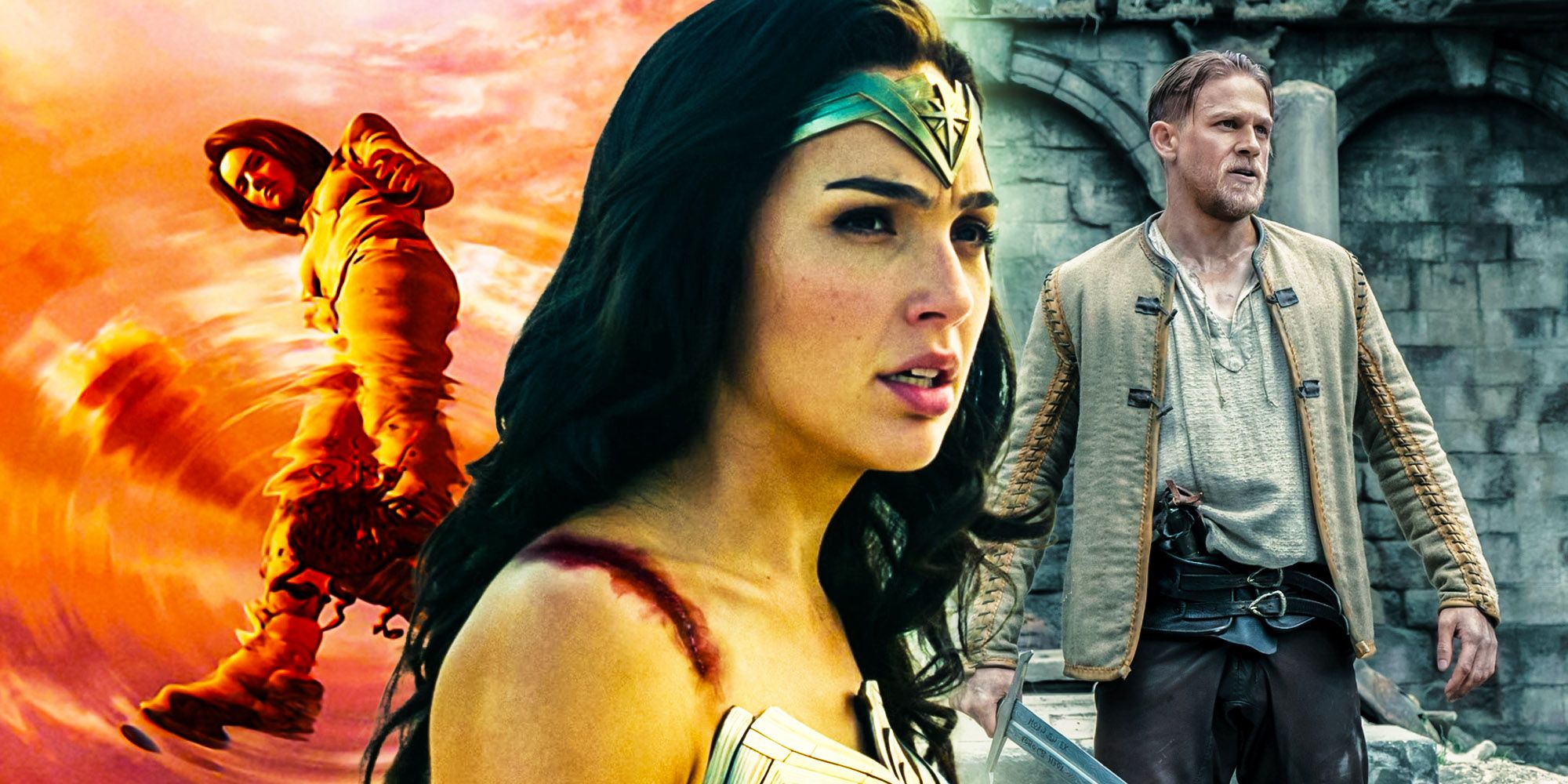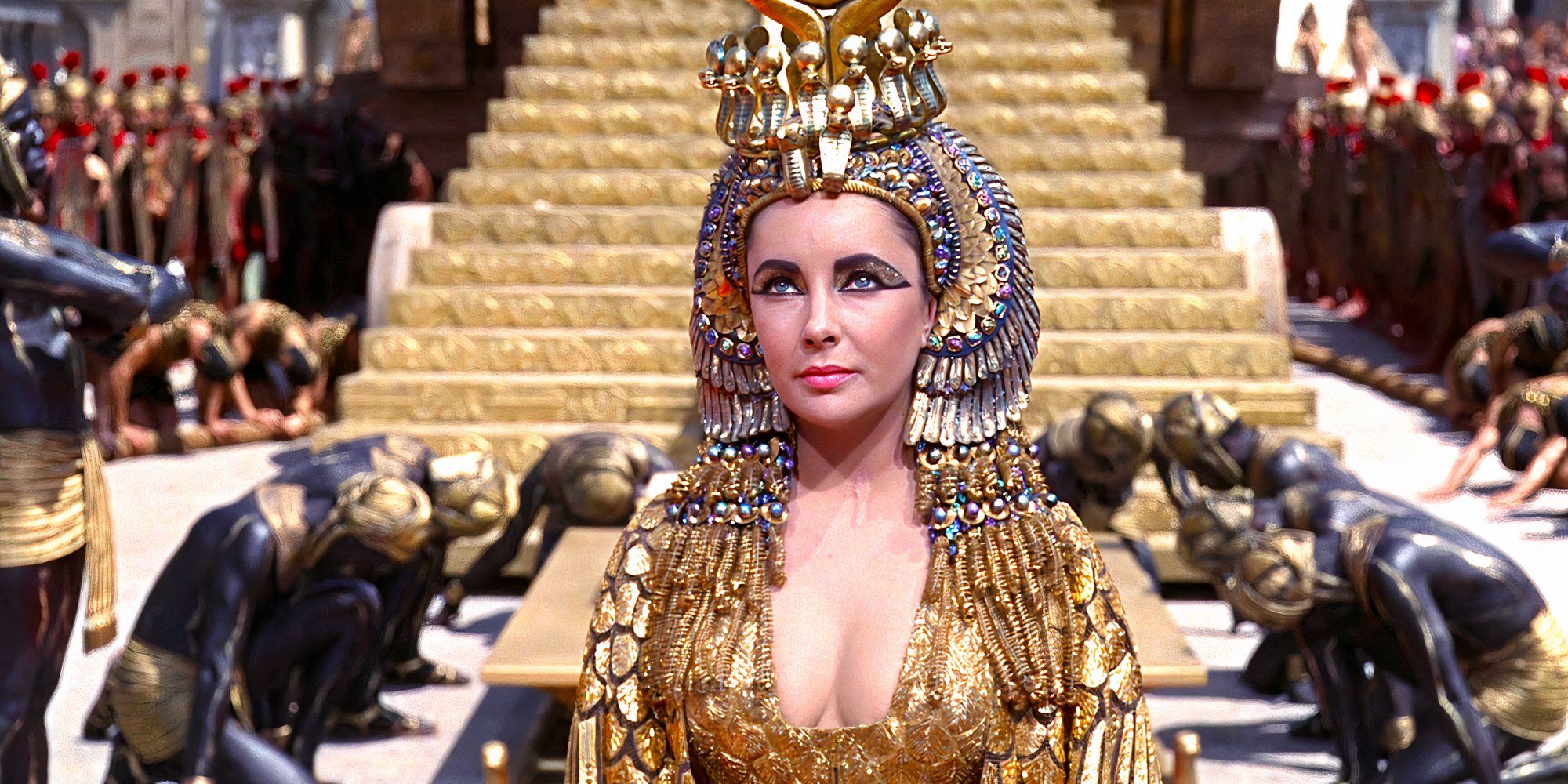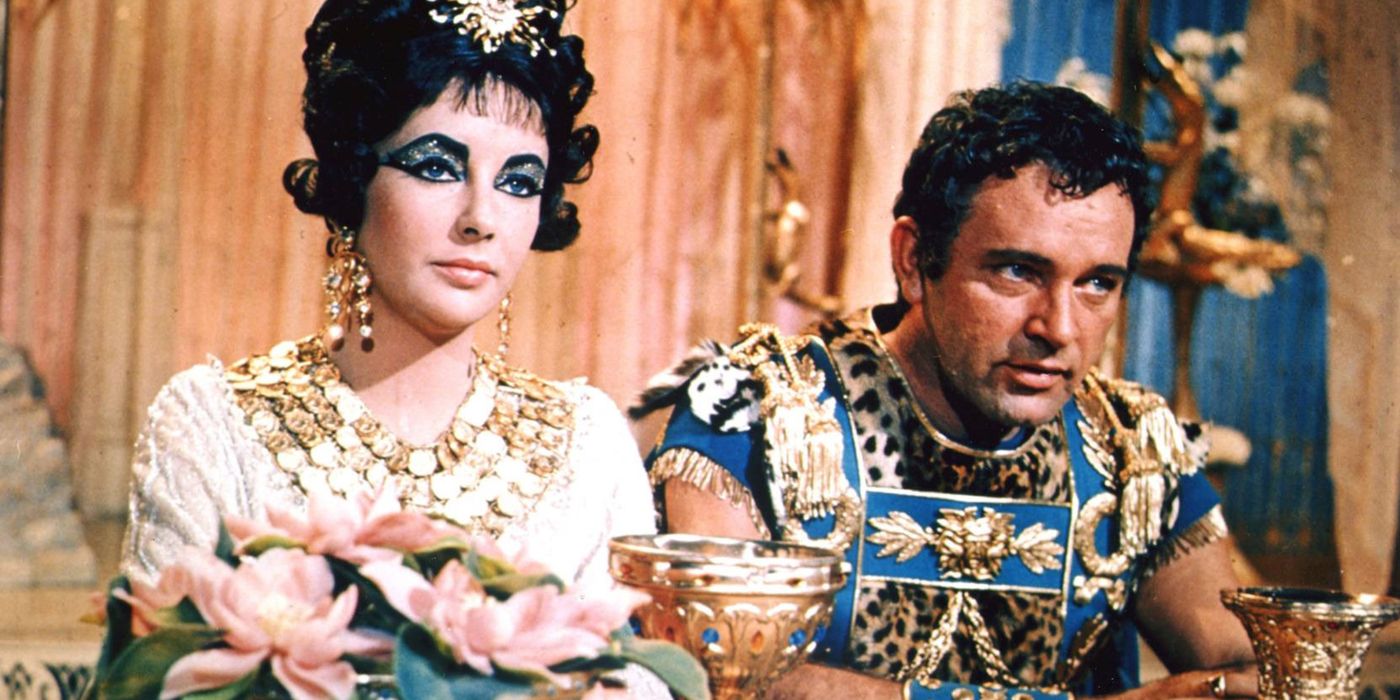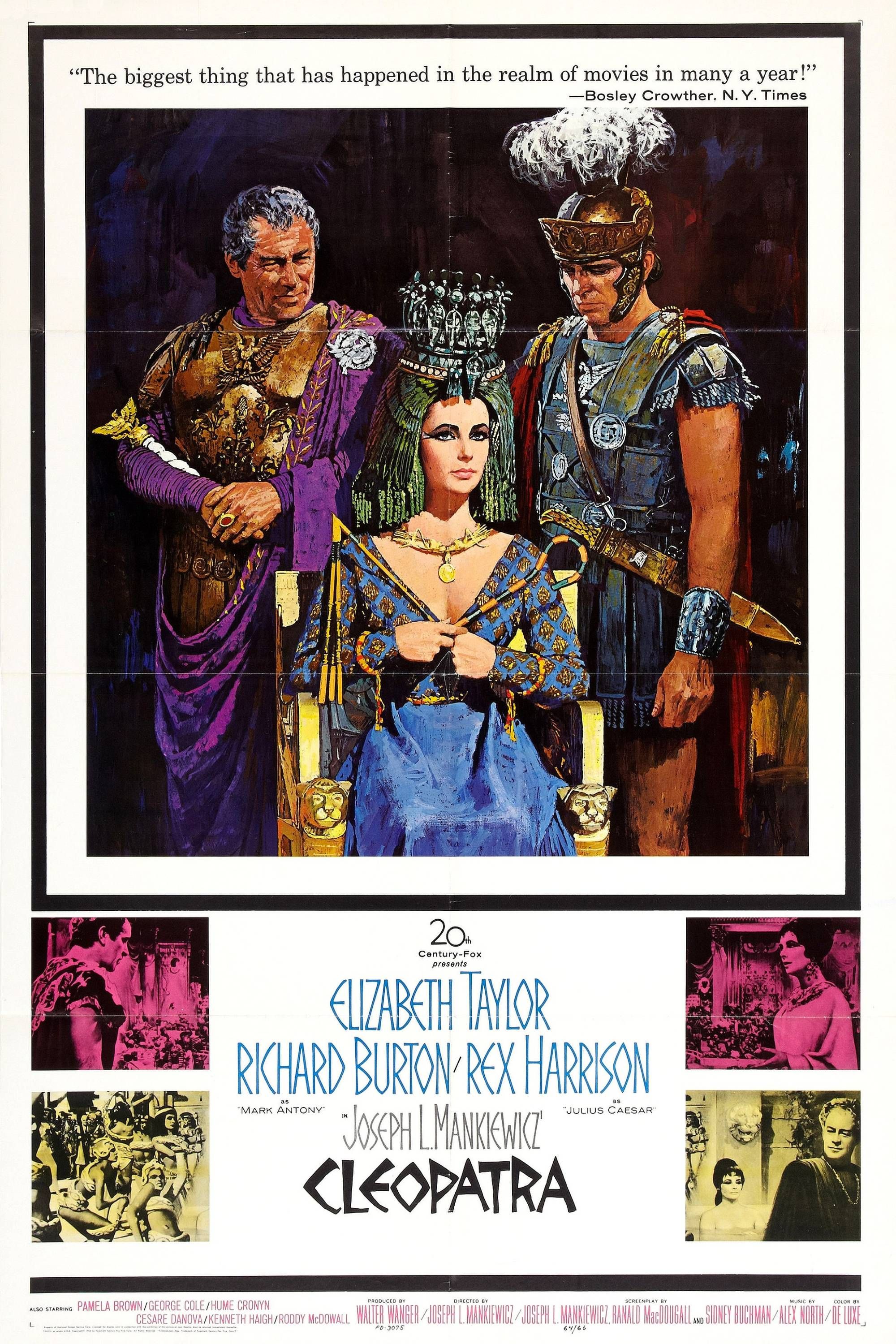Summary
- Cleopatra was a box office triumph but a financial disaster, quadrupling its budget and facing scandals and delays.
- The film covered every detail of Cleopatra’s tragic story, from her alliance with Caesar to her love affair with Mark Antony.
- Despite being the top movie of 1963, Cleopatra’s massive budget, behind-the-scenes drama, and controversies led to it being a financial flop.
1963’s Cleopatra was a triumph at the box office, topping the charts for that year, but the four-hour epic still managed to be a complete financial fail. The film, which starred Elizabeth Taylor in the titular role, along with Richard Burton as Mark Antony and Rex Harrison as Julius Caesar, was steeped in controversy during its years of development. It seemed like everything that could go wrong did, and each mistake and scandal made the bill climb ever higher. By the time Cleopatra was released in 1963, it had quadrupled its budget, making it virtually impossible for the box office to make up for it.
The idea for a massive, unlike-anything-anyone-had-seen-before movie about Cleopatra started with Walter Wanger (via Vanity Fair), a successful film producer who brought the concept to Twentieth Century Fox in 1958. At first, everything went as expected with Cleopatra. Taylor was cast, Rouben Mamoulian was chosen to direct, and several other actors were selected to take on the various other roles. This was when everything began to go wrong. After delays and an entirely spent budget, Twentieth Century Fox had to basically start over with a new director and massive recasts, rewrites, and refilms that all cost big bucks.
Related
10 Most Expensive War Movies Ever Made
Some of the greatest war movies ever made also had incredibly large budgets, which were utilized for grand visuals and impressive set pieces.
What Cleopatra Was About
The Four-Hour Epic All About Egypt’s Most Famous Queen
The script for Cleopatra was adapted from the 1957 book The Life and Times of Cleopatra by Carlo Maria Franzero. It’s a story the world has long been fascinated with—the rule of the famed Egyptian queen, Cleopatra, and her alleged love affairs with first Rome’s Julius Caesar, then Mark Antony. It’s a tragic tale of betrayals, coups, murder, love, and suicide, and Cleopatra held nothing back. The film’s total runtime is 3 hours and 53 minutes, allowing the 1963 epic to cover every detail of the story, beginning with Cleopatra’s partnership with Caesar to dethrone her little brother (and husband) Pharaoh Ptolemy XIII, who had previously pushed her out of Egypt.
Once Cleopatra successfully regained her throne in Cleopatra, she married Caesar, and the pair dreamed of ruling the world together. Their combined heir, Caesarion, was formally recognized, and all seemed well—that is, of course, until the famed assassination of Julius Caesar. After this, Cleopatra instead began a love affair with Mark Antony, and the two joined forces against Octavian, Caesar’s adoptive son, who was selected as heir above Caesarion. After several lost battles and a few deceptions and misunderstandings, Antony commits suicide and dies in Cleopatra’s arms, who later kills herself as well.
Cleopatra Was A Big Box-Office Success In 1963
The Scandals Surrounding Cleopatra Drew Audiences To Theaters
Cleopatra has long been a mysterious and intriguing historical figure, so it’s no surprise that her dramatized story drew audiences to theaters. If the tragic seductress wasn’t enough, the notorious scale of the film would do it. Cleopatra‘s massive runtime was bolstered by rumors of magnificent sets and harrowing performances, and the 1963 film managed a whopping $58 million at the global box office. Adjusting for inflation would put Cleopatra‘s gross at about $484 million, which is still a fair success by today’s standard.
By the time Cleopatra hit theaters, the struggles and controversies faced during production were common knowledge, and critics and audiences alike were looking to see whether they deemed all the trouble worth it.
Cleopatra was the top movie of 1963 by a good margin, and the film remained in the top 10 highest-grossing films for quite some time after. Critical reception was mixed, however. By the time Cleopatra hit theaters, the struggles and controversies faced during production were common knowledge, and critics and audiences alike were looking to see whether they deemed all the trouble worth it. The overwhelming conclusion seemed to be that Cleopatra was just okay. This was ultimately reinforced by the fact that Twentieth Century Fox had lost millions on the project despite the film’s box-office success.
Cleopatra’s Budget & BTS Issues Explained – How Much Money It Lost
Love Affairs, Disorganized Sets, & Wasted Cash – Oh My!
Producer Walter Wagner had a grand vision for Cleopatra, and it was clear from the beginning that it was going to be an expensive film. However, no one could have predicted how much Twentieth Century Fox would end up spending on the project. At the very early stages of production, the studio gave Wagner a budget of about $3 million to get the ball rolling—enough for 64 days of shooting with cast and director salaries. Another $5 million was added to cover Nigel Balchin’s script and a potential leading lady. Ultimately, Taylor very publically signed a deal for $1 million—more than any female actor had ever been paid.

Related
20 Biggest Box Office Bombs Of All Time
From Pixar flops to Western catastrophes to CGI messes and franchises that never took off, these are the 20 biggest box office failures of all time.
Shooting for Cleopatra started in England, and this was the first of many expensive mistakes Fox made. An Alexandria set, which featured several 52-foot-tall sphinxes and covered 20 acres, was constructed for $600,000, only for the gloomy weather to make filming Egypt-set scenes virtually impossible. To make matters worse, Taylor became seriously ill with pneumonia and very nearly died before she made a recovery and resumed filming. Still, after several months of work, Cleopatra had already gone over budget, losing $7 million and only completing 10 minutes of footage (none of which included Taylor).
After several months of work, Cleopatra had already gone over budget, losing $7 million and only completing 10 minutes of footage (none of which included Taylor).
Cleopatra was already in over its head by the time Taylor recovered, but Fox decided to start over from square one. The leading lady was one of the few actors to remain with the project, and even a new director was brought in (Joseph Mankiewicz). The England set was scrapped, and filming was brought to Italy instead. The new sets were even grander than before, with the Roman Forum replica reportedly ending up bigger than the real thing. Naturally, all of this costs an excessive amount of money. In the end, Cleopatra cost $44 million to make, about $350 million today.
The outrageous cost of Cleopatra was public Hollywood news in the 1960s, as was the behind-the-scenes drama of the project. Taylor very famously began an affair with Richard Burton, leading both to get divorced from their respective spouses. There were also frequent reports of drug and alcohol use, compounding the already disorganized state of filming. The cast would publically discuss the bizarre process of making Cleopatra for years to come, describing it as a surreal and chaotic experience. Despite being the biggest movie of 1963, it took Twentieth Century Fox years to recover from Cleopatra.
In the end, it’s estimated that Twentieth Century Fox spent closer to $60 million on Cleopatra (when taking into account expenses that aren’t typically reported within budget), which means the film’s $58 million box-office gross just didn’t cut it. It wasn’t until Fox sold Cleopatra‘s television broadcast rights for $5 million that it could be said that Cleopatra broke even, and this didn’t happen until 1966—three years after it achieved the status of blockbuster and massive financial flop all in one.
Source: Vanity Fair











